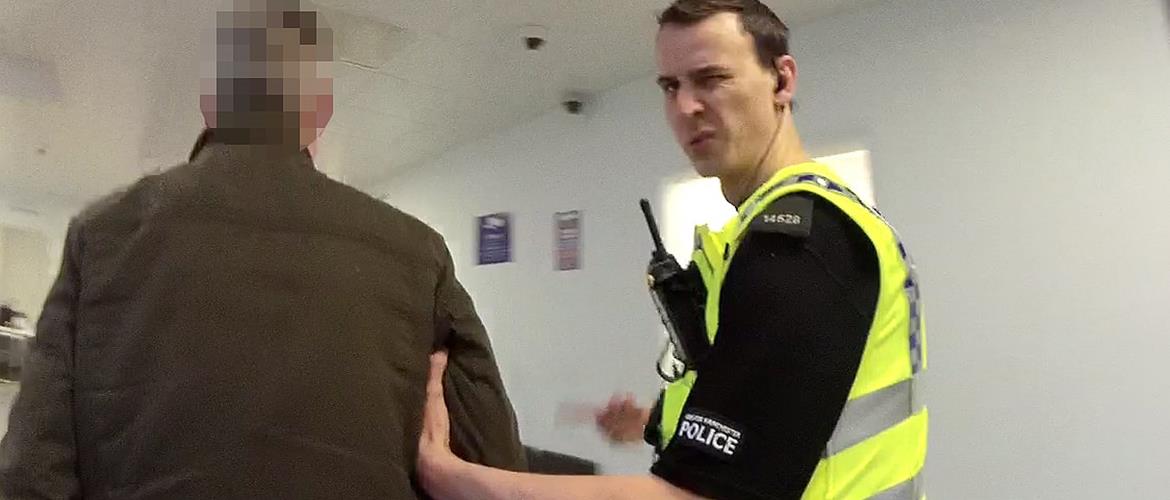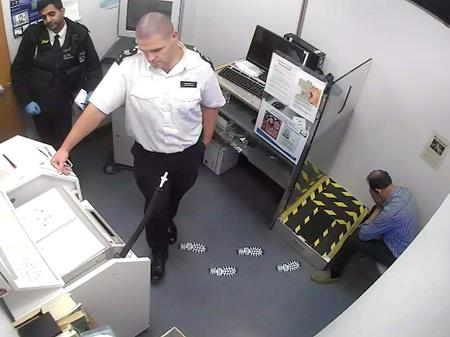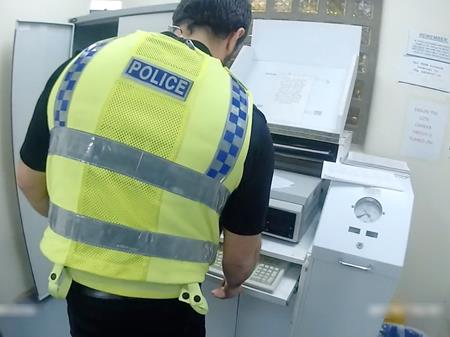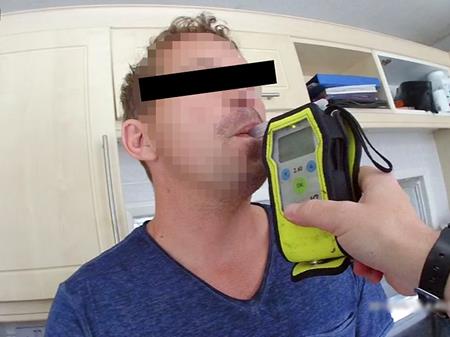Reports Obtained by the Police: Don’t Believe Everything You Read

Most lawyers do not understand science. Anyone who understands science or chemistry will usually go on to study medicine or some science related degree. Over the years I have dealt with numerous scientists and doctors in relation to drink driving cases. Their reports usually contain lots of medical and scientific jargon and can be extremely difficult to comprehend. Reading their reports is almost like learning a new language! Many lawyers, I’m ashamed to say, don’t even fully read the reports (even when they bother to obtain them) but simply look for the conclusion and hope it is favourable to their client.
A specialist doctor or scientist who is qualified as an expert witness for the court can be extremely helpful when defending a drink drive related matter. For example, I will often use an expert witness when back calculations of alcohol are required or we need to assess the accuracy of breath, blood or urine specimens. An expert witness will also, to a greater or lesser extent, ‘choose’ what to include in their report (whether instructed by the defence or prosecution).For example, I would always expect the content of an expert report obtained by the police or prosecution service to
benefit the police or prosecution. Note that I have underlined the word “content”. It is vital that the content of an expert report is fully understood.
I’d like to give you an example of a case that I dealt with that no one thought I would win.
Case: Understanding the science proves inaccurate evidence
My client failed the breath test and also failed a urine test. The police had all the relevant documents completed (MGDDA, MGDDB, witness statements, lab reports, etc). Most lawyers would, in this situation, be talking to their client about a guilty plea. Anyone who knows me also knows that this is not my style. Only by fully understanding the requirements placed upon the police (when completing breath, blood and urine specimens) and the science relating to the accuracy (or otherwise) of the results, was I able to identify a possible error with the results. Detailed below is a summary of my client’s case. I have tried to keep it a simple as possible whilst at the same time trying to illustrate the importance of understanding the science.
In my view, most CPS solicitors do not understand the science of drink driving, particularly relating to how a human body eliminates alcohol. My thinking is pretty straight forward: if I understand the science but the CPS solicitor does not, I have a much better chance of winning my client’s case (where scientific calculations are in issue of course).
Let me talk you through this case.
The MGDDA document (the document detailing the breath test procedure) stated the alcohol reading at the time of the roadside test was 64?g. The test was completed at 2139 hours. See the actual section, below, taken from the MGDDA document.

The MGDDA document also stated the lowest alcohol reading at the time of the police station test was 43?g. The test was completed at 2314 hours.

The MGDDB document (the document detailing the urine test procedure) stated the first urine specimen was obtained at 2328 hours.

The MGDDB document also stated the second urine specimen was obtained at 0028 hours. This was later sent to the lab for analysis.

The lab report stated the urine sample contained not less than 154 milligrammes of alcohol per 100 millilitres of urine (154 mg%).

My client was charged with drink driving and bailed to court.
I represented my client at the first court hearing. As soon as I read the MGDDA and MGDDB documentation I had a suspicion that the results were not correct. Let me explain.
You will note from the above MGDDA document that my client provided readings of 64?g% at 2139 hours and 43?g% at 2314 hours. Therefore, 21?g% of alcohol appears to have been eliminated from his breath during the 95 minute interval. From this figure I was then able to calculate that my client had a ‘breath alcohol elimination rate’ of 13.3?g% per hour.
By understanding the correlation between breath and blood alcohol elimination rates, I was able to determine that the above figure gave a corresponding blood alcohol elimination rate of 27-40mg% per hour (with the most likely rate being 31mg% per hour). Based on scientific studies and accepted data, an elimination rate of 27-40mg% per hour is very high and is greater that I would expect to see within the general population. Blood alcohol elimination rates typically range from 10-25mg% per hour with the most likely rate being 18mg% per hour.
Elimination rates can vary within the general population. A study in 1990 (Neuteboom and Jones: Forensic Science International) considered blood results from over 1,000 drivers and found elimination rates of between 10-64mg% per hour with an average of 22mg% per hour. Interestingly, a blood alcohol elimination rate of 30mg% per hour or more was observed in 9.8% of cases and 45mg% per hour in 0.7% of cases.
Breath test devices
Currently all roadside devices used by the police are not evidential devices, meaning they cannot be used in evidence to prove the accuracy of a breath test. No contemporaneous calibration checks are completed during a roadside breath test. Although manufacturers recommend that such devices are checked on a monthly basis, it is unlikely that you will have been supplied with any such data. It is possible that the roadside device had not been checked in accordance with the recommendations.
It should also be noted that breath test devices are designed to measure alcohol in deep lung air. Alcohol contained in the mouth (usually when alcohol was consumed close to the time of the test) can produce a substantially increased, and false, reading. Interestingly, roadside breath test devices are not designed to detect mouth alcohol. If mouth alcohol is present then the roadside device will indicate an alcohol level that is not correct, but the police officer will believe it is correct and arrest you.
Provided the roadside breath test is conducted 20 minutes after your last alcoholic drink, and assuming you have not refluxed alcohol from the stomach, the roadside test should be accurate and should correspond with the breath test result at the police station. Importantly, the police and prosecution service will always believe the roadside device to be accurate – and this can help the defence, as in my client’s case.
My client last consumed alcohol some 60 minutes before the roadside test and there was no issue of reflux. In this case I was happy to accept that the roadside test was accurate. It should, therefore, have been the case that the police station test produced the same reading as the roadside test, subject to a deduction due to the elimination rate (time between the roadside and police station tests). I was already able to conclude that, due to the elimination rate detailed above, my client either had an unusually high alcohol elimination rate, or one (or both) of the breath test
devices were faulty. This was very helpful when I also considered the urine result. I should also point out that the above information completely bypassed both the police and the CPS! They did not understand the significance of the breath test results and the benefit to the defence.
Production of urine
It’s a simple fact that urine is produced in the kidneys and is then passed to the badder where it is stored until urination occurs. The significance of this fact is often missed when considering a drink drive case based on urine results. Let me briefly explain why. The alcohol in your urine may not equate with the alcohol contained in your blood passing through your kidneys. Lets say you last had a drink of alcohol 2 or 3 hours ago. This may no longer be in your blood (or breath) but if urine is stored in your bladder it would still show in any urine specimen. This is why your bladder should be emptied fully prior to a urine specimen. To be accurate, the second urine specimen should be taken from freshly produced urine, not from urine stored in your bladder from an earlier time. The first urine specimen should, of course, be discarded.
Another way of looking at it is that alcohol in your blood diminishes over time. It is not saved within your body. However, alcohol in urine is saved in your body. It remains in the urine, in the bladder, until it is urinated out of your body. Drink driving law is concerned with the effect alcohol has on your brain. It is only the alcohol in your blood that enters your brain and affects they way you drive. By measuring breath or urine, the tests are designed to find out, as close as possible, the level of alcohol in your blood. A breath test is designed to detect alcohol in deep lung air, that is, the air in direct contact with your blood vessels deep in your lungs. A urine test is designed to detect alcohol in urine produced from the kidneys when the blood also passes through the kidneys. In effect, the breath or urine should be a representation of the alcohol contained in your blood.
The only way the alcohol level in urine can equate, as closely as possible, to the alcohol level in blood is when the bladder starts to refill, after it has already been emptied. This will be fresh urine produced by the kidneys at the time when the blood (containing the alcohol) was also passing through the kidneys. You may already have realised the problem that arises if the bladder is not emptied fully prior to any specimen. I have handled many cases where the police officer has informed my client only to fill a specimen pot with the first specimen, or to only partly empty the bladder because another specimen is required soon. I have even had cases where my client was told to start to urinate in the toilet, then stop, then start again and fill the specimen pot!
The law requires two specimens be produced within one hour. The first is to be discarded. The second is known as the evidential specimen. The reason for hour time limit is to allow
for fresh urine to accumulate in the bladder, for the reason specified above. The above science is not new. The British Medical Association produced a report in 1967 entitled The Drinking Driver recognised that urine alcohol concentration trailed behind blood alcohol concentration by approximately 20 minutes. It also specifically recognised the lack of equilibrium between blood alcohol and alcohol in urine stored in the bladder. In addition, it noted the presence of residual alcohol in the bladder. The report recommended these errors (relating to the accuracy of alcohol in urine) can be reduced if two specimens are taken at least 30 minutes apart and the results of both specimens given to the court.
This, of course, still does not happen!
Any specimen of urine analysed by a laboratory (for use in a prosecution) should include a 6% deduction. In my client’s case, you will note that the lab report stated his result was 154 milligrammes of alcohol per 100 millilitres of urine (154 mg%). Therefore, his actual urine specimen would, according to the analysis before deduction, have shown a reading of at least 163 mg%.
As a result of urine being stored in the bladder, the concentration of alcohol in a urine specimen will not be in equilibrium with that in the blood passing through the kidneys. In effect, it will be an average of all the blood-equivalent urine alcohol levels that have existed since the bladder was last emptied. The alcohol concentration calculated will actually have existed in the urine at some time before that under scrutiny. This time can be estimated as that at the midpoint in time between the two specimens (assuming the rate of urine production is roughly constant throughout this time).
You will note from the MGDDB document that the first specimen was taken at 2328 hours and the second specimen at 0028 hours; one hour later. Assuming my client fully emptied his bladder at 2328 hours, the most accurate time when the alcohol in urine most closely matched the alcohol in his blood would have been at the half way point, this being 2358 hours. It will be obvious from the above, but I stress the point because of its significance to urine specimens, that if the first specimen does not fully empty the bladder, the second specimen will not produce an accurate assessment of the level of alcohol affecting your ability to drive.
If you have been charged with drink driving following a urine test, carefully consider whether you fully emptied your bladder before giving a specimen for analysis. Conversion from breath result to urine result. It is scientifically accepted that the breath alcohol concentration will depend on an individual’s breath alcohol:blood alcohol ratio. In the general population this will vary between 1:2000 to 1:3000 with a most likely value of 1:2300. A similar ratio exists between urine and blood alcohol. The range of expected values are between 1.2:1 and 1.5:1 with a most likely value of 1.33:1.
In order to convert a breath alcohol level to a urine alcohol level we first have to produce a range of blood alcohol concentrations and then ultimately a series of urine alcohol levels. In my client’s case, his breath alcohol concentration was 43?g%. When we work through the calculations, this would be equivalent to a urine alcohol concentration of between 103 and 193 mg%, with a most likely concentration of 123 mg%, after subtracting 6% as is normal.
There is no way of knowing the precise breath, blood and urine alcohol elimination rates that applied to my client at the precise time he was asked to provide a specimens at the police station. It is only possible, in any case, to make a calculation based on accepted scientific data. We know that my client’s roadside breath test was 64?g%. This would provide an equivalent urine alcohol concentration of 95 mg%, allowing for the 6% reduction. You will, of course, have noted that this figure is substantially less than the lab analysis of 154 mg %. Of course, a reading of 95 mg% is below the legal limit of 107 mg%.
We also know that the police station breath test was 43?g%. This would provide an equivalent urine alcohol concentration of 107 mg%, allowing for the 6% reduction. You will, of course, have also noted that this figure is considerably less than the lab analysis of 154 mg%. It is also on the legal limit of 107 mg%. So what can we conclude from the above?
- The roadside screening result and the police station breath test result were not consistent.
If we assume that both devices are accurate, this would indicate that my client had a higher than normal alcohol elimination rate. - If he did have a higher than normal alcohol elimination rate, his actual urine specimen would have been even lower than the figures above (which were based on averages). There would, therefore, have been an even greater disparity between his expected urine alcohol reading and the lab result.
- My client’s urine specimen contained micro-organisms and the level of preservative added by the police was too low to prevent their proliferation. This would therefore produce alcohol above that present in his urine specimen when it was first taken. It should be noted that all samples sent for analysis should contain a preservative, sodium fluoride, to inhibit the growth of micro-organisms such as bacteria or yeast.
- My client’s bladder was not emptied fully prior to the second urine specimen. It therefore follows that the sample used for analysis consisted partly of old, stored, urine and part fresh urine. The old urine, with a higher concentration of alcohol, was what accounted for the higher reading. In effect, the urine sample sent for analysis contained a higher concentration of alcohol than that present at the time of the sampling, corresponding instead to the situation in my client’s body sometime before the urine specimen request was made.
- In my client’s case, I had raised the issue of an incorrect specimen from the start. I had stated on the case management documentation at the first court hearing that my client did not empty his bladder at the first specimen. However, you will appreciate that there is a big difference between simply asserting that he did not empty his bladder and actually having scientific evidence to prove it.
By understanding the science behind the calculations of alcohol in breath, blood and urine, and how alcohol diminishes over time, it is possible to produce extremely strong date to cast doubt on the prosecution’s case. Remember, it is for the prosecution to prove a case beyond reasonable doubt. If we can establish a doubt, even a relatively small doubt, then the court should not convict.
In my client’s case he was found not guilty.






